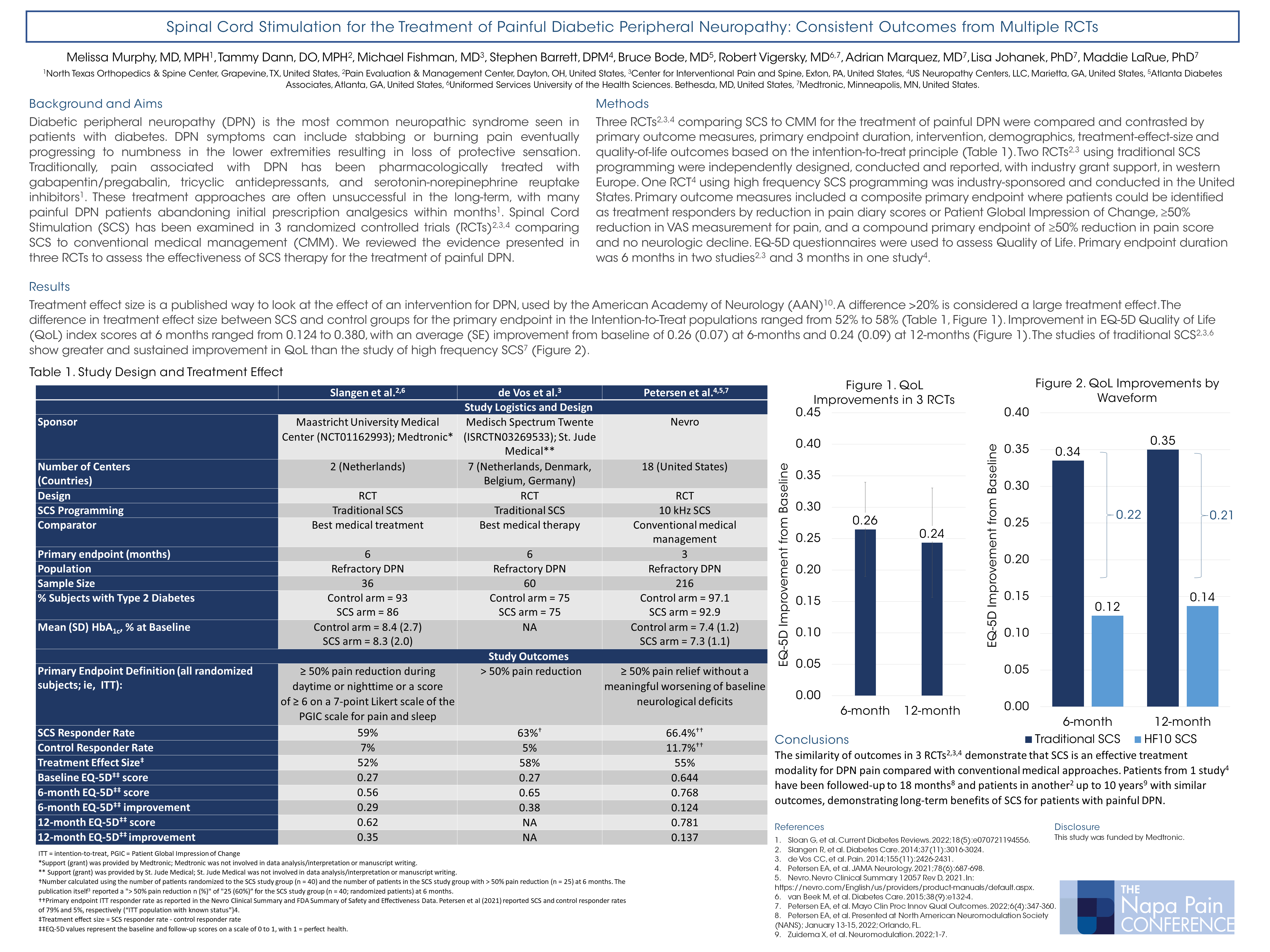
BACKGROUND AND AIMS
Pain associated with diabetic peripheral neuropathy (DPN) is treated medically with antineuralgics, tricyclic antidepressants, and serotonin-norepinephrine reuptake inhibitors1 which are often not satisfactory long-term. Spinal Cord Stimulation (SCS) is an effective alternative per 3 randomized controlled trials (RCTs)2,3,4. We reviewed and compared 3 published RCTs2,3,4 comparing SCS to conventional treatments for painful DPN in subjects with mostly type 2 diabetes (Table 1).
METHODS
Study outcome measures included a composite primary endpoint where patients could be identified as treatment responders by reduction in pain diary scores or Patient Global Impression of Change, ≥50% reduction in Visual Analog Scale (VAS) measurement for pain, and a compound primary endpoint of ≥50% reduction in pain score and no neurologic decline. EuroQol-5 dimensions (EQ5D) questionnaires were used to assess Quality of Life.
RESULTS
The difference in treatment success between SCS and control for the primary endpoint in the Intention-to-Treat populations ranged from 52 – 58%. Improvement in EQ5D index scores at 6 months ranged from 0.124 – 0.380.
CONCLUSIONS
The similarity of outcomes in 3 RCTs2,3,4 demonstrate that SCS is an effective treatment modality for DPN pain compared with conventional medical approaches. Patients from 1 study4 have been followed-up to 18 months8 and patients in another2 up to 10 years9 with similar outcomes, demonstrating long-term benefits of SCS for patients with painful DPN.
DISCLOSURE
This study was supported by Medtronic.